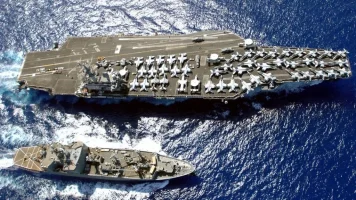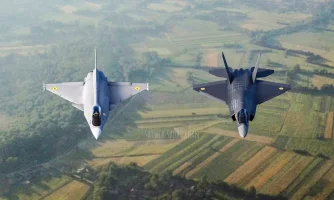- Views: 864
- Replies: 6

The Indian Navy is actively seeking to expand its fleet of Medium Altitude Long Endurance (MALE) Unmanned Aerial Vehicles (UAVs), with a particular focus on indigenously developed platforms.
This initiative aims to enhance the Navy's maritime surveillance and reconnaissance capabilities while reducing the operational burden on its existing Boeing P-8I Poseidon aircraft.
The Navy's interest in MALE UAVs is driven by the need for persistent surveillance over vast stretches of the Indian Ocean Region (IOR). While the P-8I Poseidon fleet has been instrumental in monitoring the region, these aircraft are expensive to operate and maintain.
MALE UAVs offer a cost-effective solution for continuous coverage of critical areas, supporting anti-submarine warfare, anti-surface warfare, and intelligence gathering operations. Their ability to loiter for extended periods provides a significant advantage over manned aircraft in these missions.
Furthermore, operating UAVs is generally less expensive than their manned counterparts, requiring less fuel and no onboard crew. This translates to increased surveillance hours at a reduced cost. By prioritizing locally developed UAVs, the Navy also aligns with India's "Make in India" initiative, promoting self-reliance in defence manufacturing and ensuring that the technology meets the specific needs of the Indian military.
This pursuit of MALE UAVs complements the Navy's recent acquisition of MQ-9B Sea Guardian drones from the United States. While the MQ-9Bs excel in high-altitude, long-endurance missions, the MALE UAVs will fill a crucial gap in medium-altitude, medium-range operations.
The Navy envisions a comprehensive surveillance network with a mix of platforms operating at different altitudes to maximize coverage and effectiveness.
Currently, DRDO's Tapas UAV is a contender for fulfilling the Navy's MALE UAV requirement. However, the Tapas has faced challenges in meeting the Navy's stringent performance expectations, particularly in endurance and altitude.
Another potential candidate is the Drishti 10 Starliner, developed by Adani Defence and Aerospace in collaboration with Israel. While promising, recent incidents, including a crash during trials, have raised concerns about its reliability.
The Navy's pursuit of indigenous MALE UAVs underscores its commitment to strengthening its surveillance capabilities in the IOR. By diversifying its aerial assets and investing in local defence technology, the Navy aims to maintain a vigilant presence in the region and safeguard India's maritime interests.


